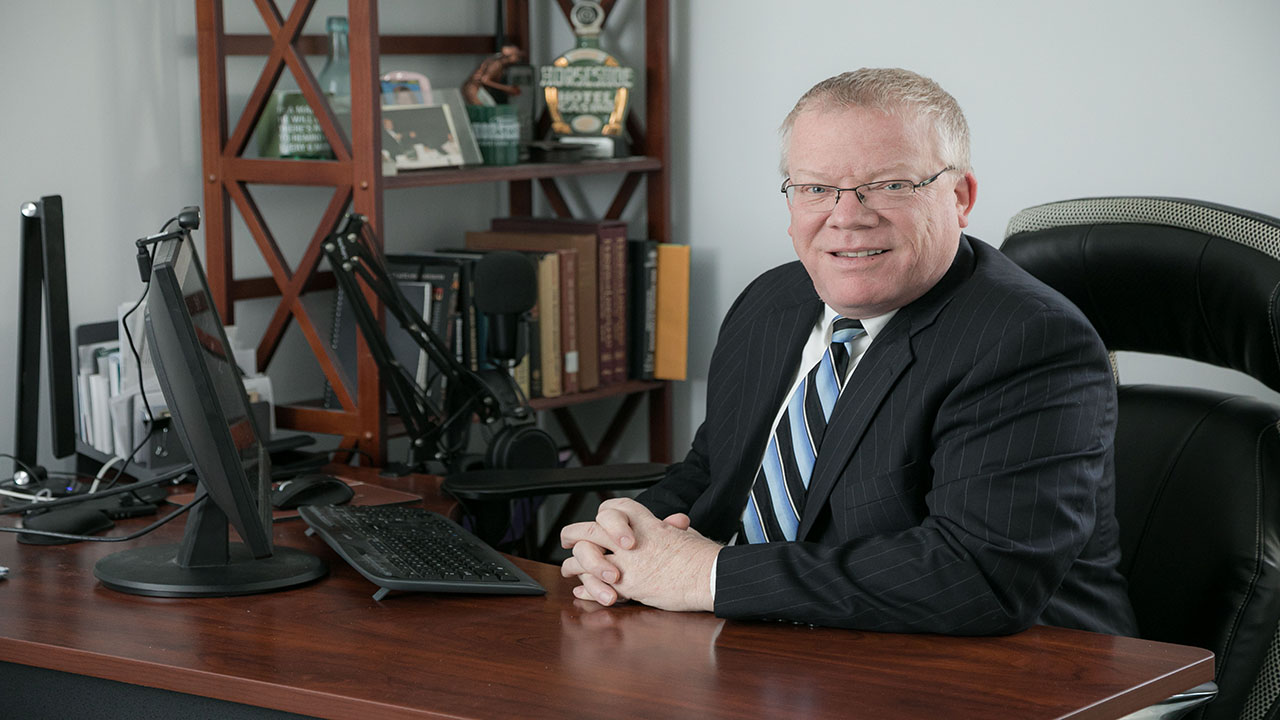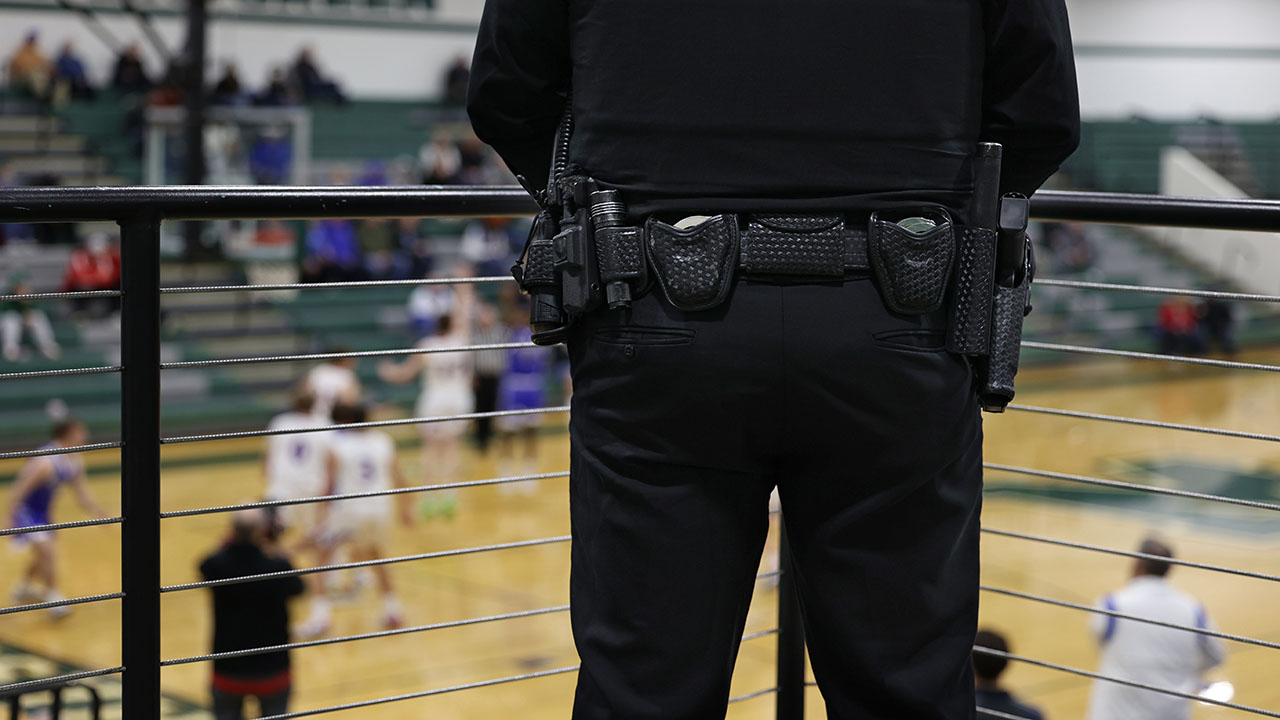
After Teachers, America’s Schools Spend More on Security Guards Than Any Other Role
America’s schools collectively spend more than $2.5 billion each year on school resource officers and $12 billion on security guards, according to new estimates from researchers at the Urban Institute, a nonprofit think tank.
By contrast, school districts spend about $10 billion per year on school counselors, $4 billion on nurses, and about $2 billion on social workers, according to Lucy Sorensen and Montserrat Avila-Acosta, authors of the Sept. 8 publication “Contextualizing the Push for More School Resource Officer Funding.”
“We spend more on security guards than any other type of school personnel, other than teachers,” said Sorensen, an associate professor of public administration and policy at the University of Albany.
Teacher salaries and benefits nationwide annually cost more than $400 billion, or close to $8,000 per K-12 student. Overall nationwide K-12 education spending totals nearly $800 billion a year.
The new analysis offers one of the first comprehensive looks at the total cost of the tens of thousands of police and security guards who patrol America’s school buildings every day. These positions have been under close public scrutiny in recent years as fatal school shooting incidents continue to devastate school communities nationwide.
The true fiscal cost of hiring these workers, though, has been elusive for years due to gaps in data collection. The new report also helps put investments in SROs and other security personnel in context by comparing them to other types of non-instructional school employees.
The most recently available data on districts’ security personnel spending are from the 2017-18 school year. It’s likely that the number of school-based police officers has grown since then, Sorensen said.
That’s even accounting for the push in the summer of 2020 for schools to reduce or eliminate their SRO programs amid racial justice protests after the police killing of George Floyd in Minneapolis. Many districts large and small took steps then to remove officers from campus.
But some, like Alexandria, Va., and Denver, have since reversed course. In other places, there have been efforts to increase the presence of officers. In Texas, a new law took effect this month that mandates that every school campus have an armed officer. Meanwhile, several federal GOP lawmakers have introduced bills this year aiming to dramatically increase federal investments in SROs, though they haven’t passed.
“So there are signs, I think, that probably overall we have more SROs than we did in 2018, and spending would be higher,” Sorensen said.
The overall number also obscures massive differences in SRO spending from state to state. In some states, like Wisconsin, schools invest little more than $10 per student in school resource officer positions. On the other end of the spectrum, Idaho’s per-pupil investment in SROs was $213—17 times Wisconsin’s SRO spending.
The data do not include the cost of resources used to arm other staff members on campus, like teachers.
Collecting SRO data is no easy task
Security guards watch school buildings but, unlike school resource officers, lack the ability to make arrests or collaborate directly with local police.
Sorensen said it’s difficult to definitively say how much money schools are spending on school-based police and security because there is no central database that tracks such expenditures.
Piecing it together district by district is difficult, too, because funding for school resource officers can come from many different sources—the local law enforcement agency’s budget or the school district’s, for example.
Often, contracts between school districts and local law enforcement agencies are not publicly available documents, complicating matters further, she said.
To estimate SRO spending, Sorensen and Avila-Acosta used data from the federal Civil Rights Data Collection that tracks the number of law enforcement officers at every school in the country. They found the nation’s schools employ at least 22,000 SROs, though the number may be higher as some states underreport the true numbers.
Then, the duo used the average police officer’s salary in each state to find a rough estimate of how much districts across the country are spending on their SROs: About $2.62 billion in 2023 dollars, or $46.87 per pupil.
Research on SROs paints a mixed and incomplete picture of their effectiveness for improving safety and decreasing the risk of on-campus violence. Some studies have shown the presence of SROs leads to declines in certain types of violence, yet not shootings, and disproportionate discipline of boys and Black and disabled students.
Sorensen cautioned that districts should consider what effect their spending can have on students’ well-being. Investing more in personnel to respond to safety issues—like police and security guards—may do less good than investing in those who can work on preventing problems altogether, like counselors and social workers, she said.
Some states with the largest per-pupil SRO expenses are also among the states with the lowest spending on positions like nurses and social workers, the report says. Texas spends $76.08 per pupil on SROs and $1,965.14 on security guards, but only $8.13 per pupil on social workers, according to the Urban Institute analysis.
“I’m sensitive to the fact that schools and policymakers feel like they need to be doing something, especially with the rising tide of school shootings, and that they want to have some safety block in place,” she said. “But at the same time, in my view, that takes a little bit of a short-term view of what the problem is and what the solution is, rather than a long-term view.”
Dig Deeper With Our Longreads
Newsletter Sign up to get our best longform features, investigations, and thought-provoking essays, in your inbox every Sunday.
The MEN was founded by John Huber in the fall of 2020. It was founded to provide a platform for expert opinion and commentary on current issues that directly or indirectly affect education. All opinions are valued and accepted providing they are expressed in a professional manner. The Maryland Education Network consists of Blogs, Videos, and other interaction among the K-12 community.
Recent Video
Worc. Sheriff and SA recommend Schools Partner with SRDs to Trespass Any...
I this series of videos, I dive deeply into the recommendations that the Sheriff and State’s Attorney have put...





